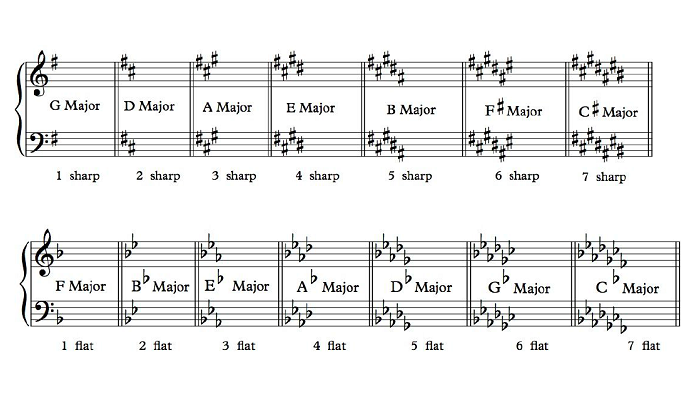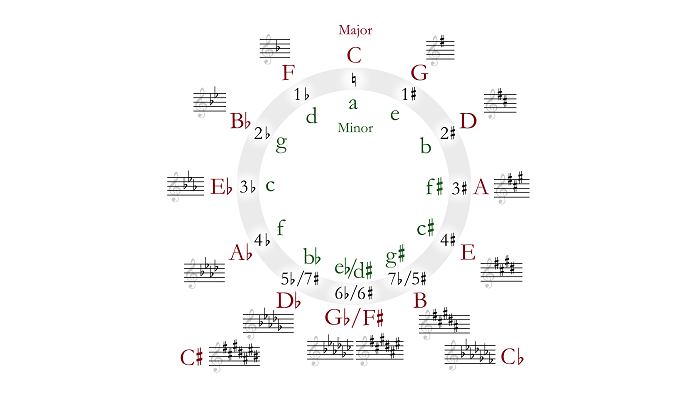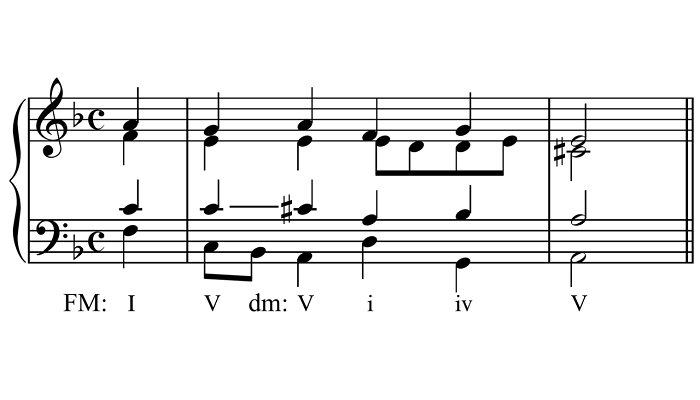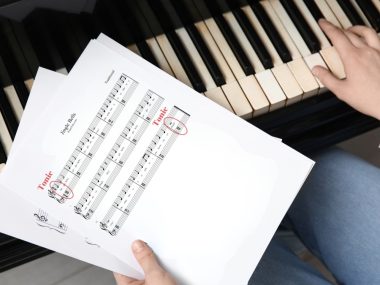What is modulation in music? Listening to music, you usually experience an expectant and smooth flow of notes and keys.
Nevertheless, Some artists choose to go through an unconventional route and create an abrupt or a flat transition to different rhythms in their music.
The change of keys is what we call modulation in music. You listen to a steady key rhythm and suddenly get transported to a new sound. Chances are, you’ve heard similar instances several times in your playlist, but you don’t know they’re called modulations.
Let’s take a closer look at the definition of modulation and how you can apply it to your notes and keys.
Modulation in a Nutshell
Modulation is most simply defined as a key change in music. You can use modulation to bring your music to life and express different emotions. You can also draw from several types of modulation, where you can choose to add a transition or surprise your listeners with an abrupt key change.
What Is Modulation in Music? The Full Guide
If you ever find yourself confused about modulation, you can explore similar instances. For example, do you know how we use conjunctions to connect sentences?
It’s the same concept. In music, composers use this connector to create a unique up and down or down and up flow.
If you want another example, think of yourself giving a presentation. You wouldn’t want to remain monotonous and bore your audience, right? A change in your tone will keep your listeners interested and engaged, just like modulation in music does.
There is more than one way to modulate your music. However, before going about the how-tos, you first might want to get a brief outlook on keys.
Keys in Music

If you’re ever around musicians, you’re bound to hear them ramble about major and minor scales. The concept of keys might be a bit confusing and theoretical, but once you play your instrument, it’ll be like your music language.
Your music’s tone will revolve around your keys. A major scale will mean you’re playing in a major key, and the same applies to the minor scale. Major scales are usually the more uplifting notes, while minor scales express more melancholy or despair.
You can use 12 major and 12 minor keys in your instruments, totaling 24 keys altogether.
The keys are A, B, C, D, E, F, and G. Each has its tonality or composition, and the tonic is made up of root notes that create your keys.
Key Signature
If you’re trying to identify your keys, you can always look at the key signature. It’ll help you know whether you’ll be playing a specific note in sharp, flat, or natural, based on the symbols.
You can find your key signature located after the cleft and before the time signature. Key signatures are a practical guide to determine what key you’ll be playing in.
For instance, a C key would usually mean no sharps or flats accompanying it. But, on the other hand, if you find a flat, you might be playing in an F key.
Finding a Modulation

After getting a refresher about your keys, finding a modulation will be simpler. All you need to look out for is a change in your key or scales. Of course, this could also mean a different key signature appearing, but that’s not always the case.
It’s easier to find a modulation in some songs than in others. For example, listening to Whitney Houston’s famous cover hit, “I Will Always Love You,” an untrained ear could instantly notice where the changes occur.
Right after her famed chorus, “And I,” you can immediately notice the significant key change or modulation. This modulation type could be categorized into pivot change modulation, but more on that later.
After you find a modulation, it’ll make you one step closer to creating your key changes. Otherwise, you can look into the different modulation types in music and try to classify them based on what you hear or see in the keys and notes.
What Are the Types of Modulation in Music?
In music, the options for a transition or change of keys are endless. Some musicians choose to avoid a shift in rhythm altogether and add an abrupt key to their music for a more unique-sounding tune.
Others prefer to add smoother transitions to avoid any disruptions. There are several ways you can go about this. First, check out the most common types of modulation to decide which would be a better fit for your music style.
Common Chord/Tone Modulation

This modulation type is best if you’re looking for a more seamless change in keys. Common chord modulation uses pivot chords rather than pivot notes to help ease you from the old key to the new key.
As you move through your chords, common chord modulation sensibly pieces your keys together. Let’s look at an example that would better describe this sort of modulation.
Transitioning between a C major to a D major can be classified as a common chord modulation. This is due to the common chord between the C major and D major.
C major chords go as follows: C-D-E-F-G-A-B-C, while D major is composed of D-E-F#-G-A-B-C#. You can find the common chord between both scales in the E minor in C major’s third and D major’s second. The other common chord between both majors is the G major found in C major’s fifth and D major’s fourth.
On the other hand, a common note modulation uses a pivot note to transition your pitches. You can find this key alteration from a B major to a D major. The common note here lies in the F# tone.
Phrase/Direct Modulation
This modulation type is more unconventional than most other ones since it doesn’t use a common chord or note to establish a more rhythmic progression. It mainly relies on the use of relative keys between each change.
What Are Relative Keys?

If you find a major and minor key with similar notes and key signatures, it’s a relative key. Take, for example, an E minor and G major key. Both have almost identical notes in their chords.
The two of them have A minor, B minor, C major, D major, and a diminished F#. If you want to listen to what relative keys would sound like, we recommend checking out the opening piano instrumental of John Cale’s “Hallelujah.” The music alternates between using C major and A minor.
You will rarely find direct modulation that implements a key change without similar key signatures (sharps and flats). It might be slightly difficult to pick up on a direct modulation because of the identical key signatures, but looking for relative keys will guide you through it.
Chain Modulation
If you’re looking to choose a more well-structured modulation, then this type might be one of the most suitable. However, it may require a bit more technicalities since it uses the Circle of Fifths.
What is the Circle of Fifth?
The circle of fifth helps in identifying the relative keys of each chord. You make the circle by starting with a chord that has no accidentals (sharps or flats)—the C chord. You then progressively move your circle clockwise to the perfect fifth, or in this case, G.
As you move to the right, you’ll notice the notes getting more sharps. After you reach half of your circle, you then move upwards to downward back from the C (12 o’clock). Moving in fifth to the left (anti-clockwise), you’ll start to notice that your notes are getting more flats.
How Does the Circle Help You Modulate Your Music?

You can mainly use the circle as a reference to your circle progression when you modulate. Most chain modulation occurs in the dominant seventh chord. This chord consists of a major triad along with a minor seventh.
That being so, you can modulate easily between an A major and an F major through this seventh circle progression. It would go as follows: A-D-G-C-F.
You might be more familiar with this sort of progression if you particularly enjoy listening to ragtime music. This circle progression is sometimes referred to as ragtime progression.
Chromatic Modulation
Chromatic modulation involves a bit of both phrase and chain modulation. While it’s not as abrupt as the phrase type, it’s also not as progressive as the latter. You can identify a chromatic modulation through a simple rearrangement of your notes.
Let’s first understand what encompasses a chromatic pattern. Like the Circle of Fifth, you can find a chromatic circle progression. You can also start with the C chord, and with every step, you move a semitone up.
Chromatic modulation uses a passing tone, where a note maintains its letter name but becomes either sharp or flat. This could be best explained by a transition from a C major to a D minor. The C in your C major (C-E-G) will become a sharp (C#).
After that, you add an A to your chord. Now you’ve got A-C#-E-G, otherwise known as a four-note chord in D minor. As you can tell, the keys are not related, and there’s no sequential shift between an old and new key.
Can You Do the Opposite?

Yes, it’s possible to do the opposite. A flat can work its way to chromatic modulation.
Take an E minor (E-G-B), and you can then flatten your B note and add a C to make C-E-G-Bb. That way, you have a chord in an F major key.
Parallel Modulation
This might be the easiest modulation type to attempt. As its name would suggest, you move from a different key but with the same tonic.
You can move from a major to a minor but keep your dominant chord. It’s like going from an A major to an A minor.
It may be argued that this would be a mode change rather than a modulation since it’s not changing the tonic. Nevertheless, the sound may tell a different story.
This sort of modulation is more harmonically coherent as well. You might be able to find it in popular songs, such as “Happy Together,” performed by The Turtles. The musicians begin their piece with an F# minor but soon change to an F major as you listen to the chorus.
Parallel modulation can effectively light up your song or cast it down since you’re changing your scales. In other words, you can go from happy to sad and vice versa.
While you can choose to move from major to minor and vice versa directly, some artists may choose to create a transition in between. It could be a modulation within a modulation.
Altered Common Tone Modulation

This is a different twist from the common tone modulation, but it still holds the same smoothness in transition. If you’re trying to modulate between two keys with no common chords, then an altered common tone modulation might be your best option.
In this case, let’s try to modulate from an F minor to a C major. It would be challenging since there are no interchangeable chords, but not impossible. You can use the root note as the glue that would stick these keys together.
The F note is available in both keys, but it’s minor in F and major in C, so you’ll then alter it by moving it down to a third, where it’s placed in C major.
Sequential Modulation
A step-by-step modulation might be easier to tackle if you’re trying to attempt modulation. The transition in this key change is not instant, like phrase modulation. It will require you to play a few keys in between before finally reaching your destination key.
Harmonically speaking, sequential modulation may lose its rhythm as it goes forward. The modulation here prioritizes its sequence more than anything else.
It moves by either lowering or heightening the pitch with a repeated sequence. You can either transpose your keys in a chromatic or diatonic fashion.







